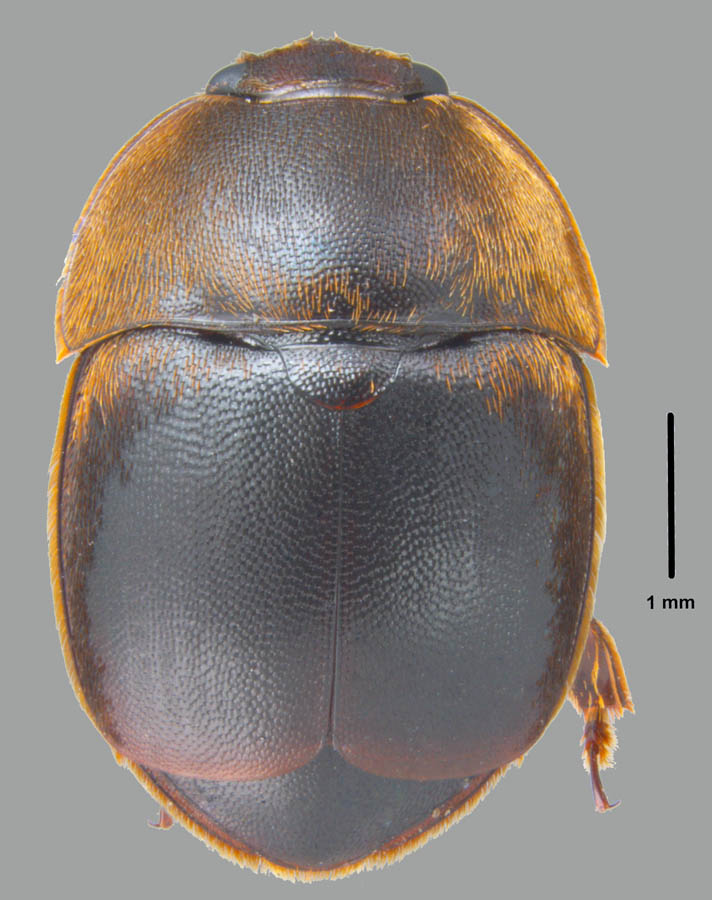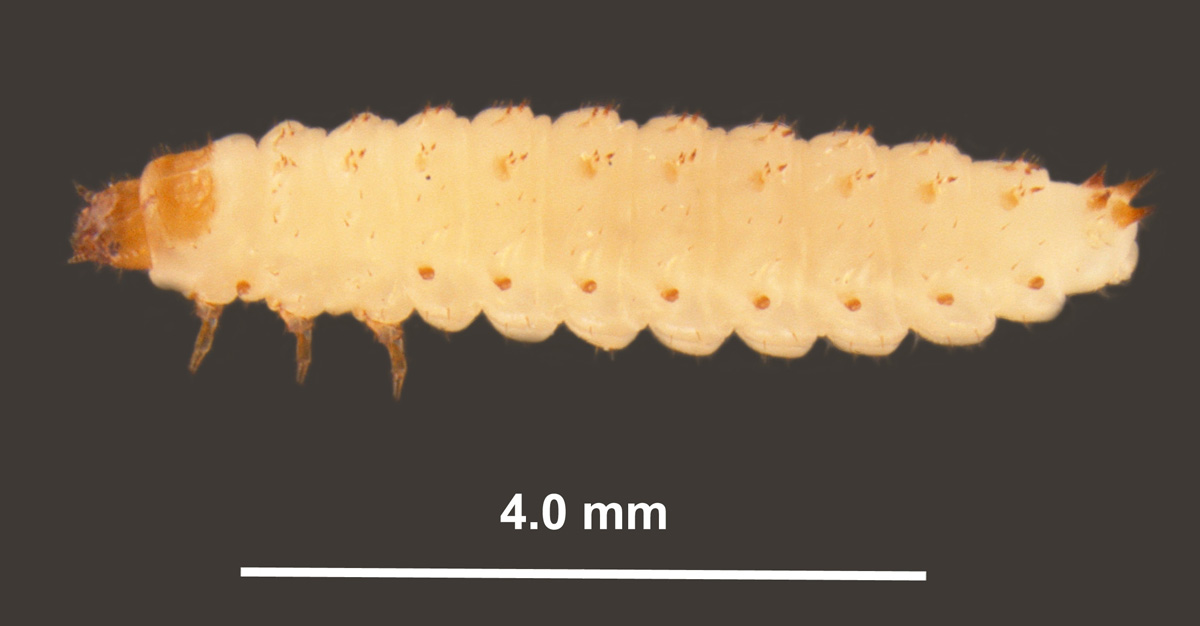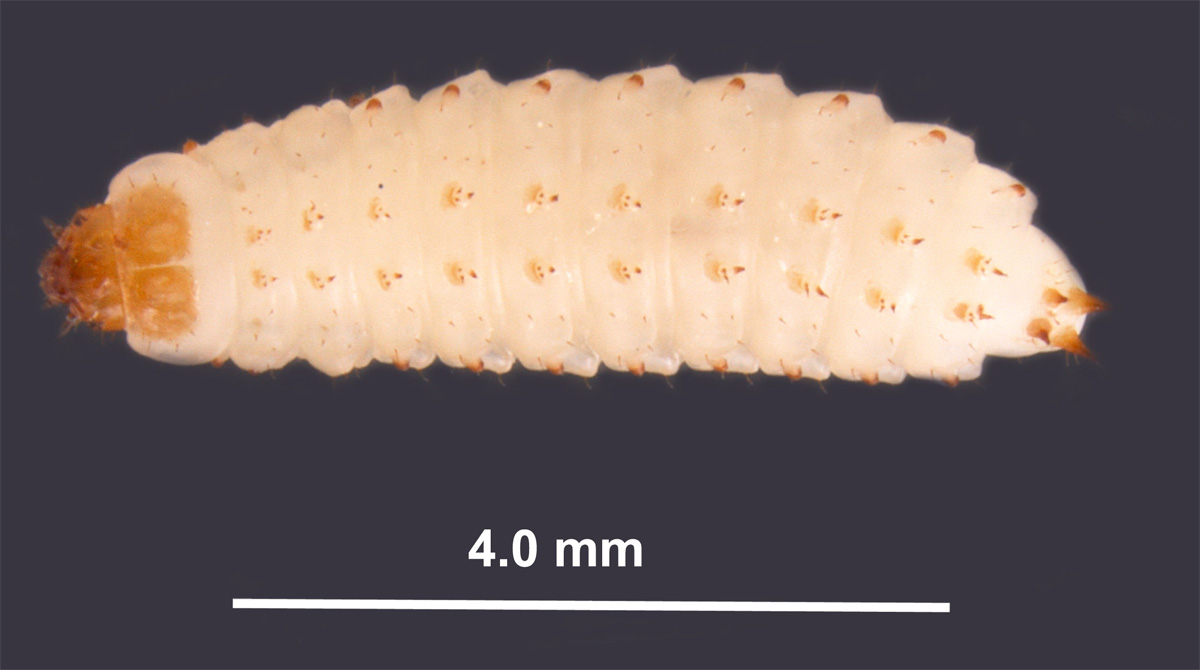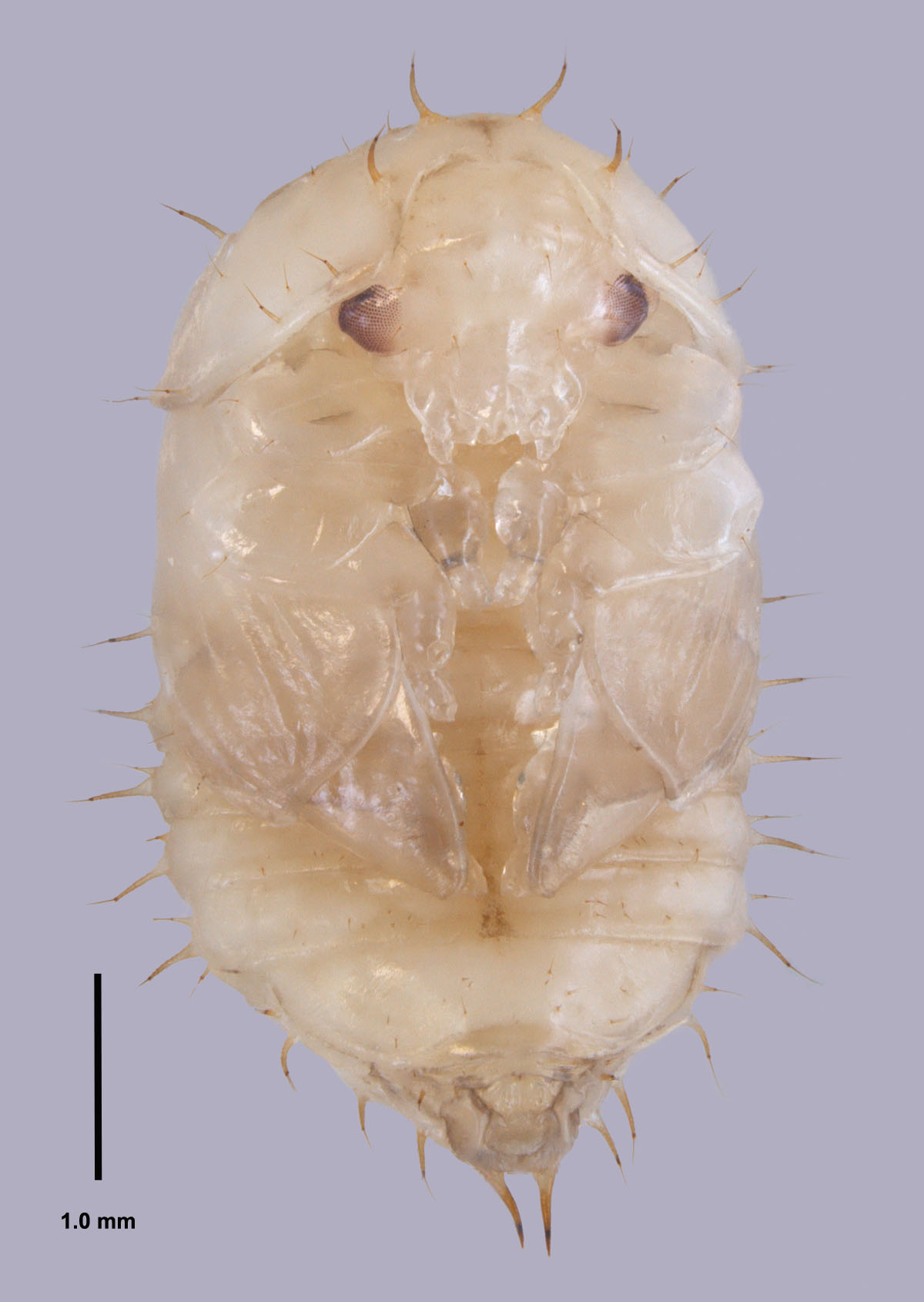Nitidulidae
Aethina tumida Murray - small hive beetle

Aethina tumida Murray, dorsal view of adult

Aethina tumida Murray, profile view of larva

Aethina tumida Murray, dorsal view of larva

Aethina tumida Murray, ventral view of pupa
Aethina tumida Murray, dorsal view of adult. Scale bar equals
0.5 cm. Drawing by Joe MacGown
Introduction
Aethina tumida, the small hive beetle, native to southern Africa, is an introduced species in Australia and the United State. In its native range, it is an occasional pest of African subspecies of the western honey bee, Apis mellifera Linnaeus. This species has rapidly increased its range since the mid 1990's and is now known to occur in much of the U.S and Australia. The small hive beetle is a pest of European strains of honey bees, and causes serious damage to colonies (Neumann and Elzen. 2004).
Identification
Adults [photo]: Broad, somewhat flattened beetles, light brown to brownish black, 5.5-5.7 mm in length (females usually longer than males) and about 3.2 mm in width, antenna ending in three-segmented club.
Larva [photo]: Elongate, with paired, raised dorsal spines on each segment; yellowish white; final instars approximately 9.5 mm long and 1.6 mm wide.
Pupa [photo]: Similarly shaped to adult, but with elongate spiny projections laterally and ventrally; pearly white early, but turning light brown as it nears adult stage; approximately 5.0 mm in length.
Biology and Economic Importance
Adult beetles invade colonies where they tend to hide in small crevices. While in the colony, females may lay over 1000 eggs. Larvae feed on honey, brood, and pollen. Upon maturity, larvae leave the honeybee colony and pupate in the soil. After pupation, they emerge as adults and re-infest colonies.
In its native range, the small hive beetle is not a serious pest of honey bees; however, in the U.S. and Australia, larvae may cause considerable damage in honey bee colonies by feeding on brood, pollen, and honey stores. Due to yeasts associated with this beetle, the honey becomes fermented after being fed on by larvae, which makes the honey unfit for human consumption. In some cases, beetle populations reach such high densities, that the honey bees leave the nest (Ellis and Ellis 2010).
Distribution
Native range: sub-Saharan Africa.
Introduced range: Australia, United States.
Literature Cited
Ellis, J. D. and A. Ellis. 2010. Featured Creatures, small hive beetle, Aethina tumida Murray (Coleoptera: Nitidulidae). University of Florida Institute of Food and Agricultural Sciences and Florida Department of Agriculture and Consumer Services. Posted online at: http://entomology.ifas.ufl.edu/creatures/misc/bees/small_hive_beetle.htm Accessed on 4 August 2010.
Neumann, P. and P. J. Elzen. 2004. The biology of the small hive beetle (Aethina tumida, Coleoptera: Nitidulidae): Gaps in our knowledge of an invasive species. Apidologie 35: 229-247.
Managing Small Hive Beetles - Cooperative Extension System Factsheet
The Small Hive Beetle, Aethina tumida: A New Beekeeping Pest - by Keith Delaplan, University of Georgia
University of Florida, Featured Creatures, small hive beetle, Aethina tumida Murray - Factsheet



